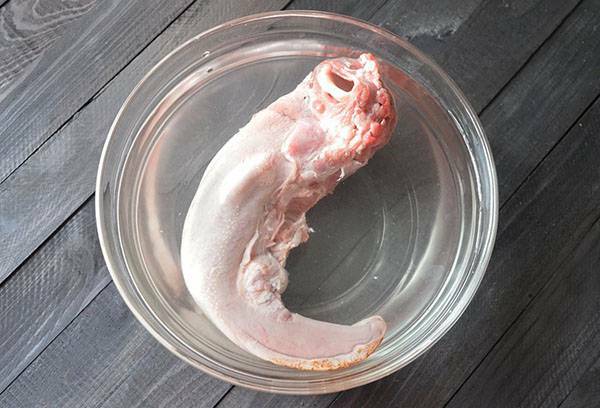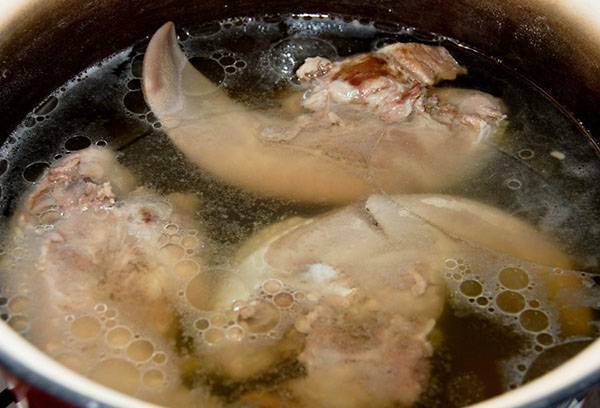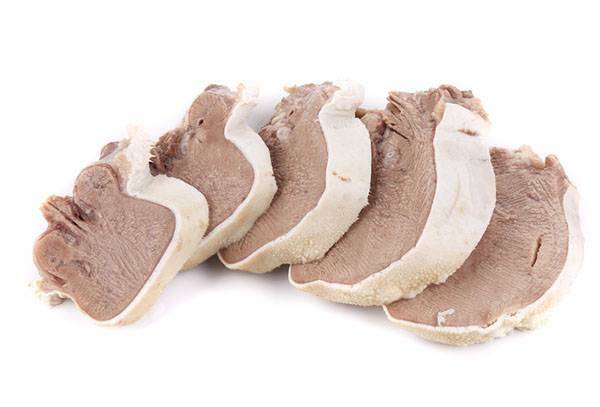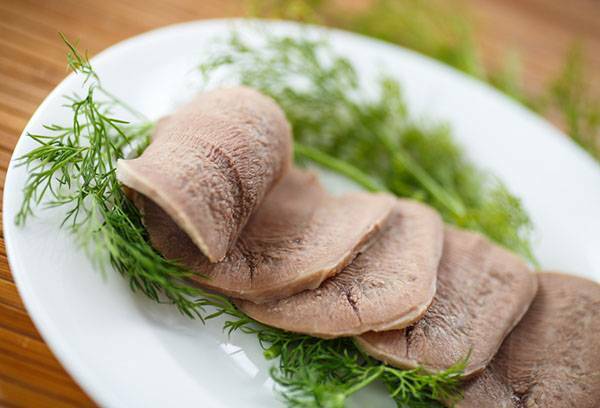Contents:
- Preparing product
- Stealing during cooking
- Cleaning the byproduct
I wanted to treat myself to a tasty snack for a festive table or a nutritious protein salad, but are you not sure how to cook beef tongue or pork tongue so that the dish turns out to be excellent? In fact, everything is quite simple: it's not harder than boiling a piece of meat. Although some tricks and nuances are better to know in advance.

Preparing the product
If you bought a language for the first time, then you may have a logical desire to peel the peel before cooking. But we know that such a method is not the most convenient: not only will this take a lot of time, but it is also very likely to remove precious meat along with the skin! So in order to save effort, skipping this stage, you can immediately carefully wash your tongue and start cooking.
And you can first improve its dietary properties. The language is considered a dietary dish, but who at least once cooked it and saw the broth, does not think so anymore. The muscle itself does contain a little fat, but so that the caloric content of the prepared dish is within reason, it will be correct to cut off all unnecessary and leave only the meat of the tongue. This is very insulting, because the cut meat is also very tasty, and the money is paid for it, but for the sake of a harmonious figure one can get involved in such an adventure.
Advice
For cooking, choose a large saucepan, although the languages themselves, especially pigs, are not too large: water should cover the product by 5-6 cm. Cook the tongue for a long time and the water will inevitably boil away. So either choose a larger pan, or constantly monitor the water level and pour it in order for the product to boil evenly.

Tricks during cooking
Both the pork and beef tongues are cooked for a long time: from 1.5 to 4 hours depending on the size. But at this time nothing to do is not required: at this stage it is enough to do just a couple of things.
- Remember that the tongue does not usually salt, and stop the arm automatically stretching to the salt shaker. It will be correct either to salt a ready-made snack, or not to salt a dish at all.
- Determine approximately how much you will brew the product. For pigs, the time is 1.5-2 hours, for beef - 2.5-4, but you need to be guided by the size.
- Boil a sufficient amount of water and dip into a pan washed and cooked with pork or beef tongue.
- For 40-50 minutes before the end of cooking add carrots, onions, peppers and bay leaves to the broth, if there is a desire to give the dish flavor.
- After the approximate time, remove the tongue, pour cold water and try to peel the skin around the tip. Not cleaned? Then the product is sent back to be cooked. If the skin goes off in a hurray, then you do not need to cook: the digested tongue is difficult to cut, and it tastes better not so much.
- Some landladies advise leaving the tongue in the broth on the switched off stove for another 30 minutes after cooking so that it becomes softer and more tender and literally melting in the mouth.
And remember that this byproduct has a strong enough tendency to boil: calculate in advance how many grams you need for salad or jellied, considering that the finished product will be about one and a half times less than what you bought.
advice If you want to use the broth later and intend to make it less fat, you can cook the pig tongue in two waters. The first broth merges in 20-30 minutes after boiling, and the second one already contains less fat, harmful substances and unpleasant odor.

We clean the byproduct
You waited for 2 hours while the tongue is welded, and now it's finally ready. Now you can put it to cool and rest a little while sitting on the Internet. No! Skin should be cleaned immediately after cooking: pulled out, doused with cold water, peeled off. Otherwise, you will long and painfully clean it.
How to clean properly? Start with the tip: there you do not even have to tackle the knife if the tongue is well cooked. The skin will go from simple poddevanija a fingernail up to the basis with a rough surface. Here without a knife it will be difficult to manage. Simply scrape these villi with a knife( they will go off pieces, not a layer), trying not to touch the delicious meat. A little harder to clean the lower surface: there the skin is so thin that it can not be pinched by fingers, and it is necessary to use the knife very carefully. Yes, the first cleaning can take far not 2 minutes, but we believe that you will succeed, and in due course cleaning will take less time.

Although cooking the tongue takes a lot of time, this is not the most time consuming process. Armed with our advice, be patient, and forward - apply knowledge in practice and create culinary masterpieces!
Read the article on how to clean beef tongue
